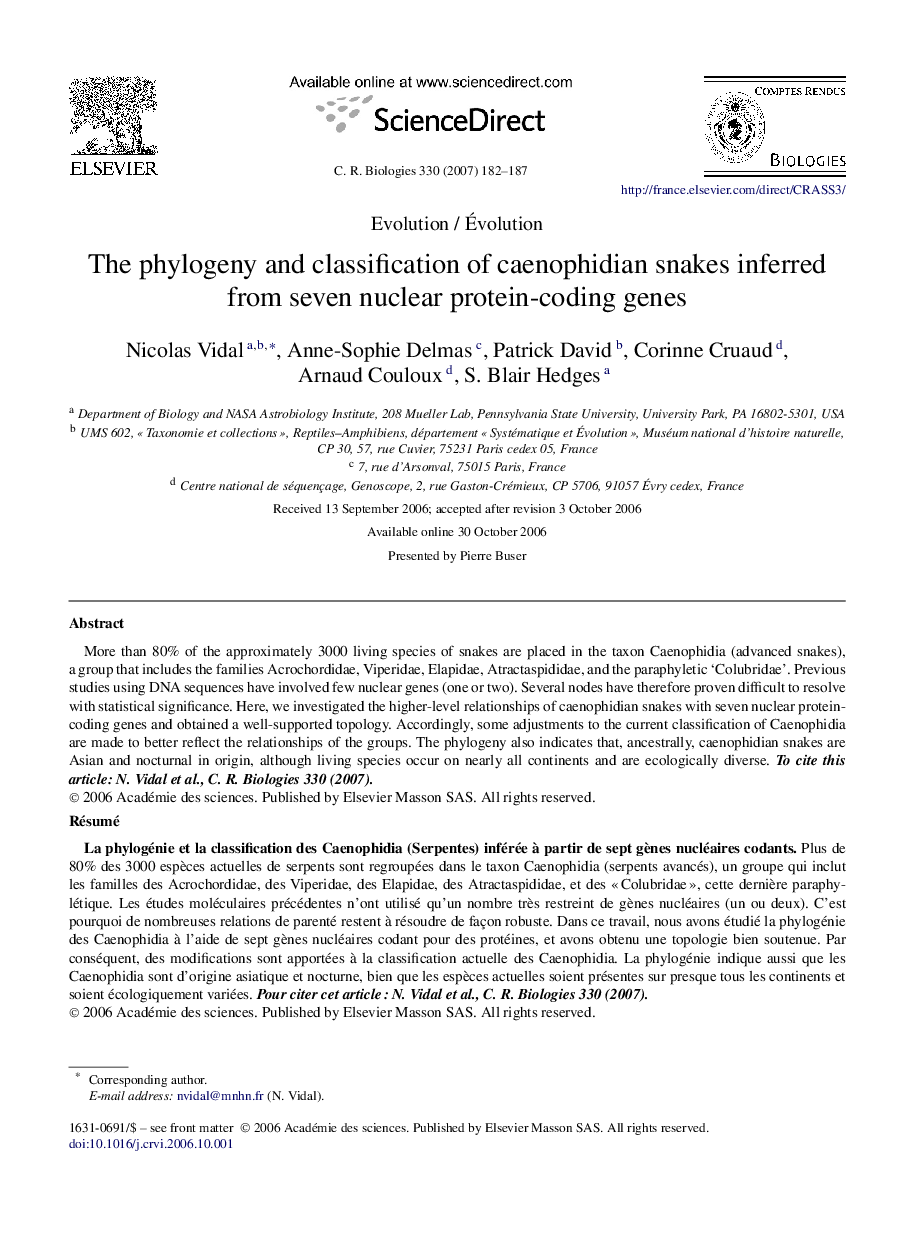| کد مقاله | کد نشریه | سال انتشار | مقاله انگلیسی | نسخه تمام متن |
|---|---|---|---|---|
| 2784714 | 1153846 | 2007 | 6 صفحه PDF | دانلود رایگان |

More than 80% of the approximately 3000 living species of snakes are placed in the taxon Caenophidia (advanced snakes), a group that includes the families Acrochordidae, Viperidae, Elapidae, Atractaspididae, and the paraphyletic ‘Colubridae’. Previous studies using DNA sequences have involved few nuclear genes (one or two). Several nodes have therefore proven difficult to resolve with statistical significance. Here, we investigated the higher-level relationships of caenophidian snakes with seven nuclear protein-coding genes and obtained a well-supported topology. Accordingly, some adjustments to the current classification of Caenophidia are made to better reflect the relationships of the groups. The phylogeny also indicates that, ancestrally, caenophidian snakes are Asian and nocturnal in origin, although living species occur on nearly all continents and are ecologically diverse. To cite this article: N. Vidal et al., C. R. Biologies 330 (2007).
RésuméPlus de 80% des 3000 espèces actuelles de serpents sont regroupées dans le taxon Caenophidia (serpents avancés), un groupe qui inclut les familles des Acrochordidae, des Viperidae, des Elapidae, des Atractaspididae, et des « Colubridae », cette dernière paraphylétique. Les études moléculaires précédentes n'ont utilisé qu'un nombre très restreint de gènes nucléaires (un ou deux). C'est pourquoi de nombreuses relations de parenté restent à résoudre de façon robuste. Dans ce travail, nous avons étudié la phylogénie des Caenophidia à l'aide de sept gènes nucléaires codant pour des protéines, et avons obtenu une topologie bien soutenue. Par conséquent, des modifications sont apportées à la classification actuelle des Caenophidia. La phylogénie indique aussi que les Caenophidia sont d'origine asiatique et nocturne, bien que les espèces actuelles soient présentes sur presque tous les continents et soient écologiquement variées. Pour citer cet article : N. Vidal et al., C. R. Biologies 330 (2007).
Journal: Comptes Rendus Biologies - Volume 330, Issue 2, February 2007, Pages 182–187